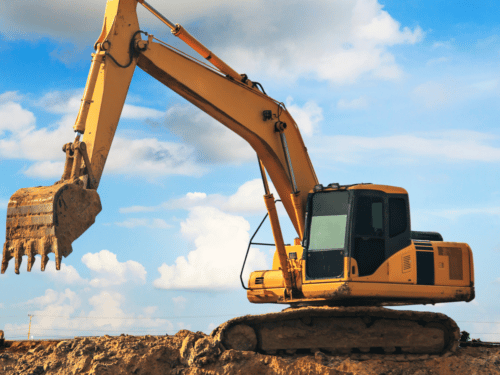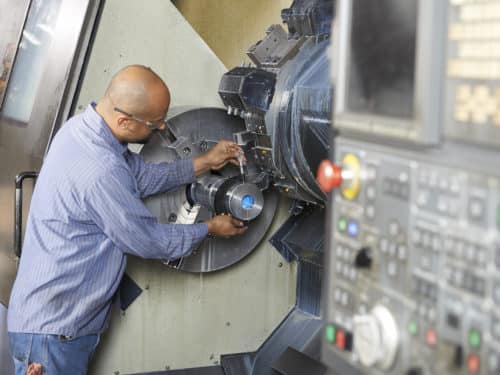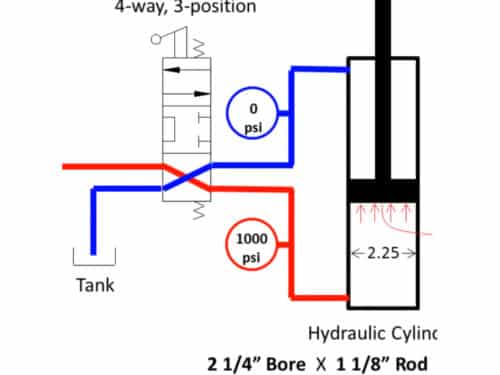Hydraulic cylinder cavitation is a leading cause of complete hydraulic cylinder failure. Cavitation will lead to wear on critical surfaces, catastrophic seal failure, overheating, lubrication issues, fluid contamination, and much more. Understanding what cavitation is, how it happens, and how to prevent it will help avoid expensive downtime and keep your hydraulic cylinder operating at a high level for a long time.
What is Hydraulic Cylinder Cavitation?
Hydraulic cylinder cavitation occurs when gas is trapped within bubbles in hydraulic cylinder fluid. The variable pressure conditions inside hydraulic cylinders cause these bubbles to collapse and implode, generating a strong mechanical shock that seriously impacts nearby metal and results in pitting, hydraulic cylinder fluid contamination, and other critical consequences for machinery and operations. Common signs of hydraulic cylinder cavitation include:
- Loud rattling or banging noises
- Extreme and unusual heat
- Visible pitting on rod surfaces or the interior surface of the cylinder
- Impaired functions and lower overall efficiency
The Causes of Hydraulic Cylinder Cavitation
There are several causes of hydraulic cylinder cavitation. The three most common are poor plumbing, flow restrictions, and high oil viscosity.
- Poor plumbing is the number one cause of cavitation. Improperly sized hose, incorrect fittings, and indirect paths from the pump to the reservoir can all cause bubbles to form, collapse, and cause cavitation.
- Flow restrictions can cause buildup in the strainer. Flow restrictions may also result from incorrect hose or a partially closed valve, resulting in increased pressure and cavitation.
- Using the correct oil viscosity is essential for optimized hydraulic cylinder performance. High oil viscosity not only results in cavitation but can also cause other damage to your cylinder.
Prevent Hydraulic Cylinder Cavitation During Regular Maintenance
The best way to prevent hydraulic cylinder cavitation is to address the main causes during regularly scheduled maintenance. Incorporate these steps into your hydraulic cylinder maintenance routine today:
- Temperature Control. Low and high temperatures can result in hydraulic cylinder cavitation. Always keep hydraulic cylinder fluid as close to ideal operating temperatures as possible, including insulating hydraulic pipes from sunlight or extreme cold.
- Check Piping. Collapsed pipe liners and suction pipes, protruding gaskets, and pumps with too much capacity can all contribute to piping losses, which in turn can cause cavitation. Check piping during all routine hydraulic cylinder maintenance to ensure no damage has occurred.
- Prevent Air from Entering the System. Regularly bleed your hydraulic cylinder and system to release any air trapped inside. Always use the correct reservoir for your hydraulic cylinder to keep air from being trapped inside hydraulic cylinder fluid.
- Check Hydraulic Cylinder Fluid for Contamination. Hydraulic cylinder fluid contamination is a leading cause of cavitation and other hydraulic cylinder failures. Change hydraulic filters as needed, use the correct hydraulic fluid, and address leaks as soon as possible.
Purpose-Built™ Hydraulic Cylinders Provide High-Performance Operations
Aggressive Hydraulics is your top source for Purpose-Built™ hydraulic cylinders manufactured to your specifications and complete hydraulic cylinder knowledge. We design and engineer long-lasting cylinders that enhance your machinery and provide the know-how you need to improve any fleet’s efficiency.
Contact us or request a quote today to discuss how Aggressive Hydraulics can support your OEM, reseller, or integrator operations.


